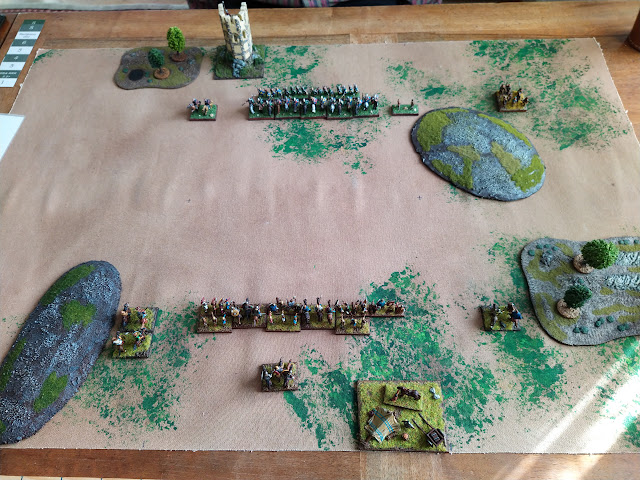There are the classics among games that do without random mechanisms, such as Go or chess, but also many board games such as the 18xx series, Diplomacy or the wonderful Civilization, to name just a few. In very many games, a more or less large random or luck mechanism is an inherent part of the game. This may be the distribution of cards or positions at the beginning of the game, the random drawing from a pile or a bag, or the spinning of a spinner, etc.
In my opinion the most popular random mechanism in (war)games is the throwing of dice. It is so widespread that there are numerous tools for it to help us ensure that
- our dice do not roll under the sofa
- the pawns and meeples stay in place and are not knocked over by the dice
- and last but not least ... they prevent intentional or unintentional manipulation of the die roll.
These tools are the dice cup, the dice tray and of course the dice tower. In this blog post, I want to tell you about a small but very practical dice tower that is cheap to buy, easy to assemble and - most importantly - can be personalised very nicely. It is the foldable dice tower by Too Fat Lardies:
This dice tower is suitable for up to about a dozen 16mm D6 dice. When not in use, it can be folded into a small box of 12x8x5cm. As you can see in the picture, there ist the Too Fat Lardies logo edged in on the front of the tower and of the dice tray.
The TFL Dice Tower is a small and practical tool in its original state. In addition, however, it can also be personalised very easily.
When assembling the dice tower, you can simply place the front plate of the tower and the front plate of the dice tray with the logo facing inwards. This way you get a neutral dice tower and a free area that you can design yourself.
See how I designed my own dice tower: On the front I placed a variant of the coat of arms of my hometown by adding a medieval halberdier:
On the back I have painted a 16th century banner bearer of the Canton of Solothurn, based on a painting by M. Jacobson from the book "die Banner der Heimat",1942:
For a friend I painted the dice tower with a modified coat of arms of the canton of Bern:
Maybe with this post I can inspire you to create your own dice tower. I look forward to your comments.

/pic309433.jpg)






















